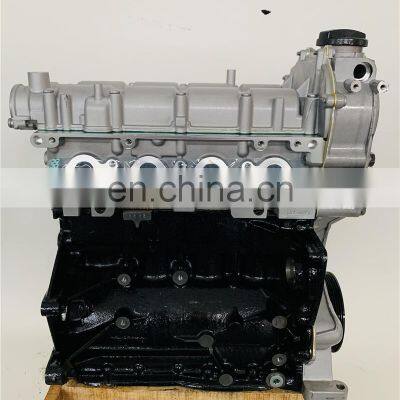Prolong the lifespan of your clp engine with regular care.
Prolong the lifespan of your clp engine with regular care.
Blog Article
Just How a Clp Engine Can Improve Effectiveness in Various Industries
The introduction of CLP engines marks a substantial shift in operational performance throughout various industries, driven by their capability to maximize gas intake and minimize downtime. As companies increasingly prioritize sustainability together with performance, the duty of CLP engines comes to be also more crucial.
Overview of CLP Engines
CLP engines, or Constant Liquid Propellant engines, represent a substantial development in propulsion modern technology, particularly for space applications. These engines utilize a constant feed system that enables for the sustained expulsion of propellant, leading to boosted effectiveness and performance contrasted to standard solid or hybrid propulsion systems. By maintaining a consistent circulation of liquid propellant, CLP engines can attain extra exact thrust control, which is critical for navigating spacecraft in various goal situations.
The design of CLP engines incorporates sophisticated materials and ingenious fuel monitoring systems. clp engine. This results in reduced weight and enhanced reliability, necessary elements for long-duration room objectives. Furthermore, the continual operation reduces the threat of combustion instability, an usual difficulty in standard rocket engines.

Benefits in Manufacturing
The production of Continual Fluid Propellant (CLP) engines provides a number of noteworthy advantages that improve both efficiency and cost-effectiveness. One of the key advantages is the structured production process, which lowers the intricacy related to conventional propulsion systems. By using liquid propellant, manufacturers can attain higher precision in engine performance, bring about optimized power outcome and decreased waste.
Furthermore, CLP engines assist in a greater level of modularity, enabling for much easier combination into numerous production lines. This adaptability can considerably lower preparations and enhance total functional flexibility. Using CLP modern technology likewise tends to lessen the need for extensive upkeep due to less moving parts, which translates right into minimized downtime and operational costs.

Applications in Logistics
Leveraging Constant Liquid Propellant (CLP) engines in logistics provides considerable advantages in operational efficiency and reliability. These engines offer a robust solution for various transport demands, enabling the smooth activity of items throughout substantial ranges. The integral layout of CLP engines top article permits constant power outcome, which translates into smoother and more foreseeable transport schedules.
Among the essential applications of CLP engines in logistics is in heavy-duty products transportation, where they can drive both ground and airborne vehicles. Their ability to maintain high performance under differing load problems makes certain that shipment timelines are satisfied, thus enhancing consumer satisfaction. Additionally, CLP engines can be incorporated right into automated logistics systems, assisting in real-time tracking and maximizing path planning.
In addition, the durability of CLP engines lowers maintenance downtime, permitting logistics companies to maximize their functional abilities. This is particularly valuable in warehousing procedures, where efficiency in managing and carrying items is important. As logistics remains to develop, the integration of CLP engines stands for a forward-thinking approach that not just improves performance yet likewise sustains the industry's expanding demands for integrity and speed.
Effect On Energy Effectiveness
How do Constant Fluid Propellant (CLP) engines enhance energy performance in transportation? CLP engines use a consistent flow of fluid gas, enhancing combustion processes and keeping a stable thrust outcome. This layout reduces power losses related to typical burning engines, where fuel delivery can differ and cause inadequacies.
The continuous operation of CLP engines permits an extra efficient thermal cycle, leading to higher certain impulse contrasted to conventional engines. clp engine. This translates to minimized gas consumption for the same amount of work done, dramatically decreasing functional costs across various transportation markets, consisting of aeronautics and maritime sectors
Moreover, the capability of CLP engines to preserve ideal performance under differing tons problems minimizes the demand for regular velocity and slowdown, additionally improving fuel effectiveness. Enhanced energy efficiency not only adds to more set you back savings but also leads to lower greenhouse gas emissions, straightening with international sustainability objectives.
Future Trends and Innovations
Emerging developments in Constant Liquid Propellant (CLP) engine technology assurance to reinvent the landscape of transportation efficiency and sustainability. As sectors pivot towards greener options, CLP engines stand at the forefront, integrating cutting-edge materials and design techniques that enhance efficiency while minimizing ecological effect.
One of one of the most appealing fads is the fostering of hybrid systems that combine CLP engines with renewable resource sources. This harmony can optimize gas usage and decrease exhausts, aligning with international sustainability objectives. Furthermore, advancements in computational liquid dynamics (CFD) are helping with the layout of more aerodynamically efficient engines, causing decreased drag and boosted fuel performance.
Furthermore, the growth of wise surveillance systems is set to boost operational performances. These systems leverage data analytics and IoT modern technology to optimize engine efficiency in real-time, ensuring that the engines operate within their most effective criteria.
As research continues to discover alternative propellant formulas-- such as biofuels and artificial fuels-- the future of CLP engines looks appealing. By using these developments, markets can not just improve their effectiveness however additionally contribute considerably to a cleaner, a lot more lasting future in transportation.
Conclusion
In verdict, CLP engines stand for a substantial innovation in efficiency throughout numerous markets. The combination of sophisticated materials and fewer relocating components reduces maintenance requirements, while visit positioning with sustainability goals positions CLP engines as a pivotal technology for the future.
Report this page